Malta – “fiore del mediterraneo”
Malta is a small island located in the heart of the Mediterranean Sea, 93 km south of Sicily and 288 km north of Africa and is known for its rich history and beautiful beaches. The coastline is dotted with medieval towers, wayside chapels and the oldest known human structures in the world, the Islands have rightly been described as an open-air museum.
The country itself is made up of three main islands: Malta, Gozo, and Comino with a total population of over 500,000 inhabitants occupying an area of 316 square kilometres.
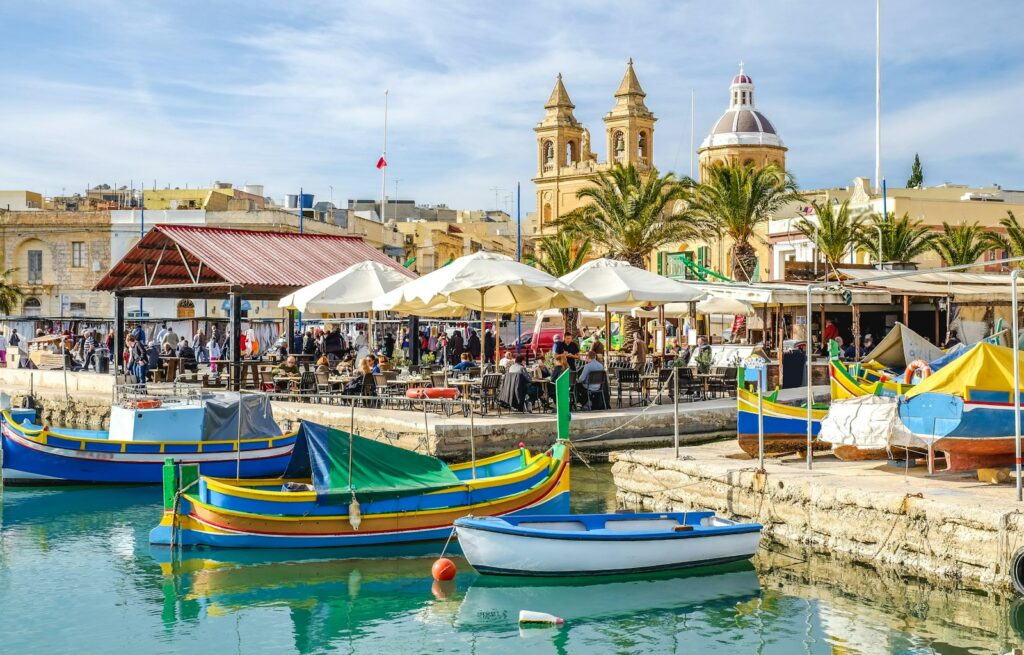
The Roman name for Malta was Melite, it is thought to have been derived from the Phoenician word for “honey” or “sweet.” This may be in reference to the island’s abundance of wild honey, which was a valuable resource for the ancient Phoenicians and Romans. Another theory is that the name Melite came from the Greek word “meli” which means “honey-sweet” and referring to the sweet water in the island. The Romans conquered Malta in 218 BC and established a colony on the island. They used Malta as a strategic base for their naval operations in the Mediterranean, and also exploited the island’s natural resources, such as timber and wild honey. Malta remained under Roman rule for more than 200 years, until the fall of the Western Roman Empire in the 5th century AD.
Gozo – The second-largest island of Malta
Gozo, the second-largest island of Malta, is known for its natural beauty and is a popular destination for hiking and outdoor activities. Visitors can explore the island’s many beaches, such as Ramla Bay and Xlendi Bay, as well as visit the historic town of Victoria and the Gozo Cathedral.
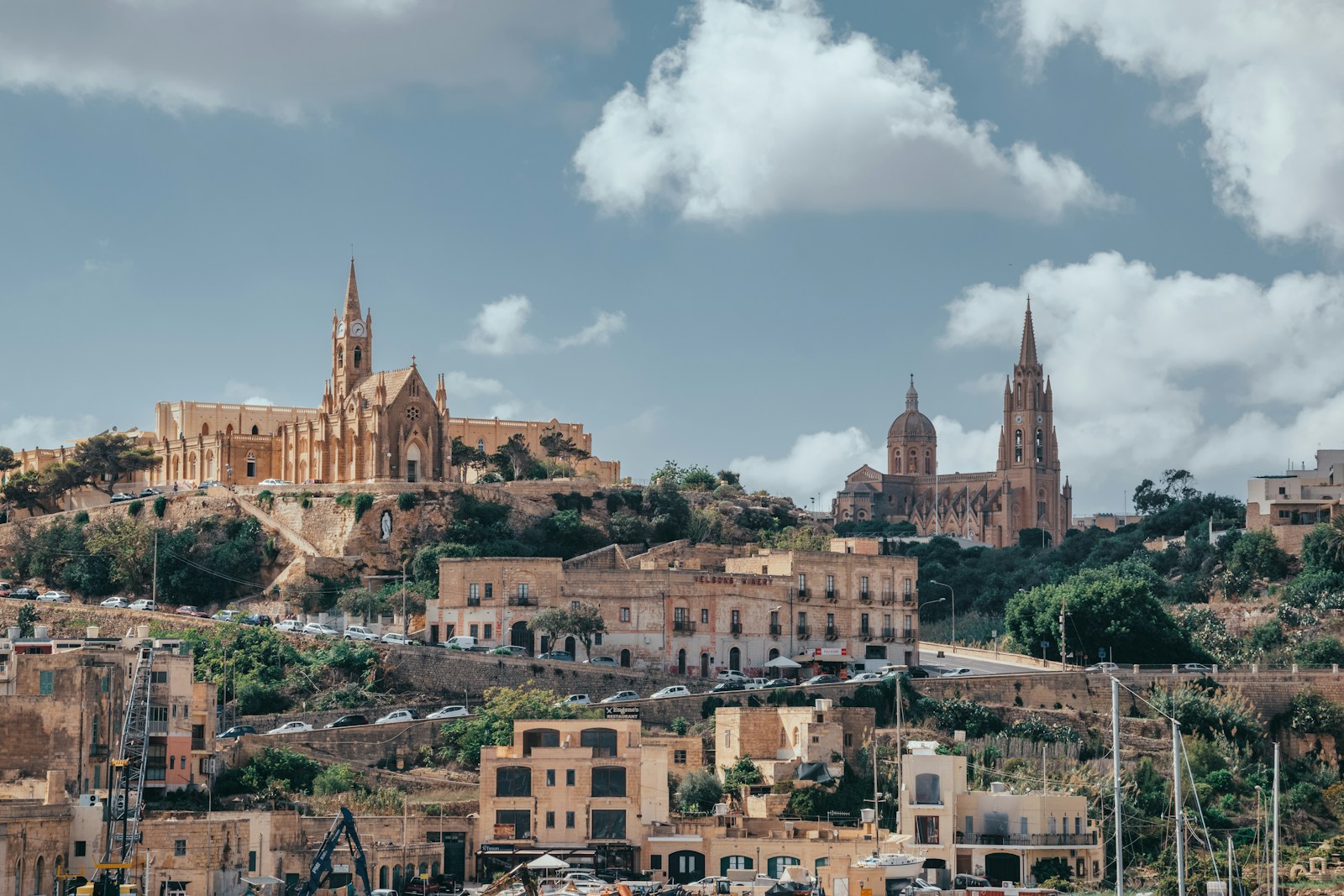
Comino – The smalest island of Malta
Finally, Comino is the smallest of the three main islands and is known for its stunning Blue Lagoon. The Blue Lagoon is a popular spot for swimming and snorkeling, and visitors can take boat trips to the island to enjoy the crystal clear waters and beautiful scenery.
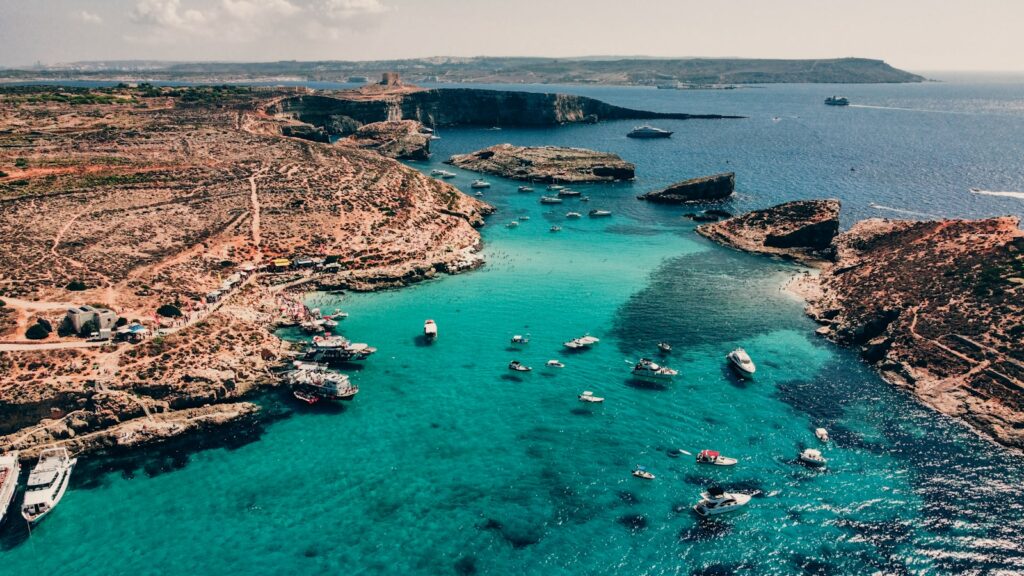
Discover Malta – Most popular places to visit
Valetta – Capital city
One of the most popular places to visit in Malta is Valletta, the capital city.
Valletta is a UNESCO World Heritage Site and is known for its well-preserved architecture, including the impressive St. John’s Co-Cathedral and the Grandmaster’s Palace. After the Great Siege of 1565, the Knights set about an ambitious project, the building of Valletta, the so-called ‘city built by gentlemen for gentlemen’. Pope Pius IV sent his foremost engineer, Francesco Laparelli, to build the city both as a fortress to defend Christendom and as a cultural masterpiece. A unique example of the Baroque, Valletta has been designated a World Heritage City.
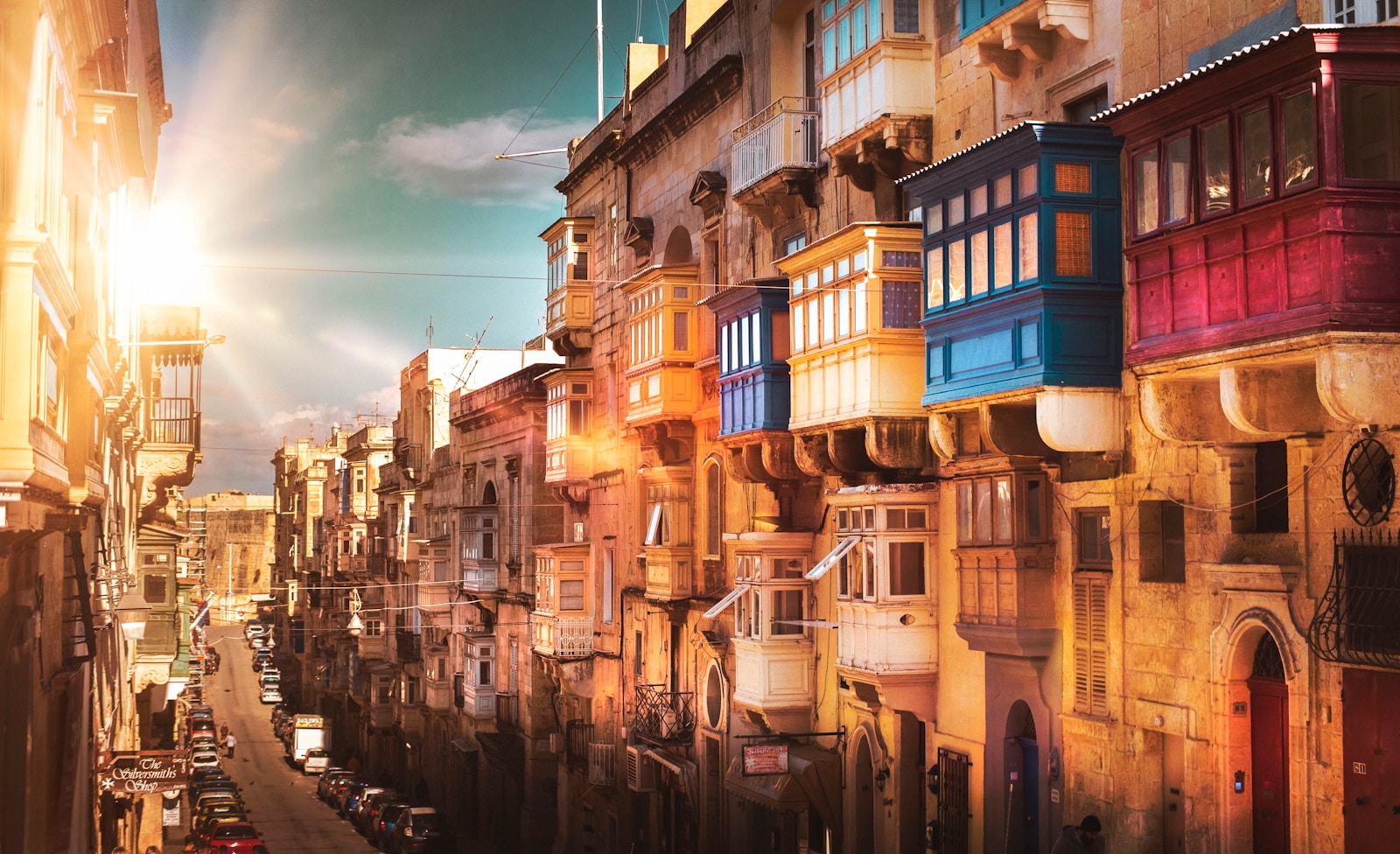
In its day, Valletta was a fine example of modern city planning. Designed on a grid system, now common in the United States, the city was carefully planned to accommodate water and sanitation and to allow for the circulation of air. Most towns and cities evolved over centuries, but Valletta, in contrast, was one of the first European cities to be constructed on an entirely new site. Visitors can also explore the many museums and art galleries in the city, such as the National Museum of Fine Arts and the Museum of Archaeology.
Sliema – Coastal town
Sliema is a coastal town situated on the northeast of Malta, adjacent to St. Julians. Once the home of Malta’s aristocracy; it has now become a major commercial area, very popular for shopping, bars, cafes, restaurants and hotels. Sliema acquired its name from a chapel dedicated to The Our Lady of The Sea (or Stella Maris) built in 1855, which served as a reference point to the fishermen who inhabited the area. The name is linked to the opening words of the Hail Mary prayer, which in Maltese are “Sliem Għalik Marija”.
Sliem is the Maltese word meaning peace or serenity.
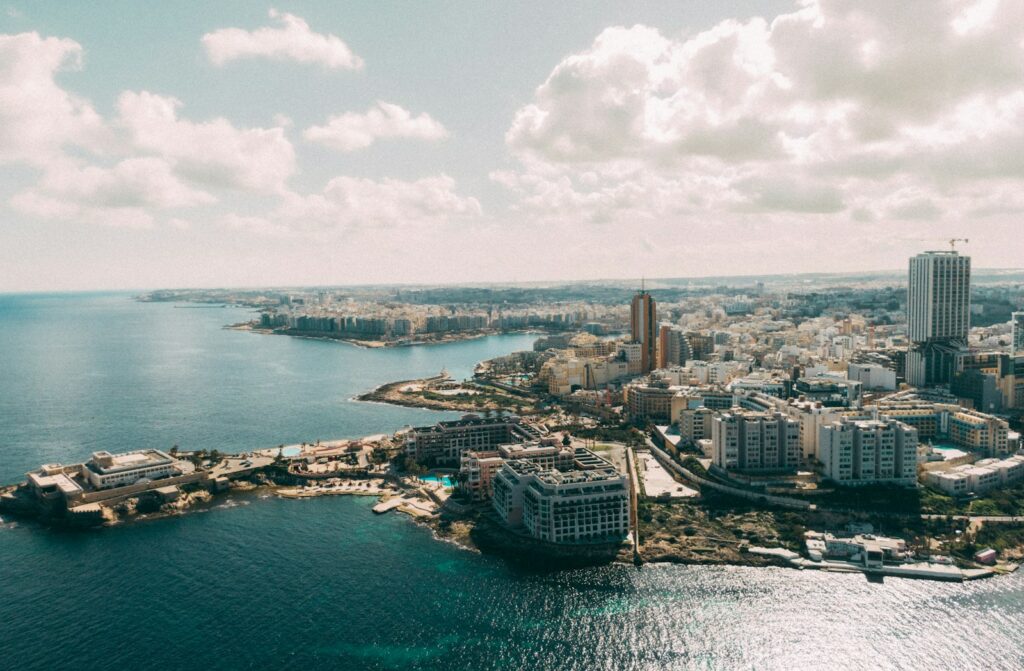
Sliema is quite a large residential town with a population of around 15,000 locals; housing also a significant number of expatriates that reside there temporarily. Sliema was once a quiet fishing village, a minor summer resort that hosted the wealthier Valletta residents. The 19th century, however, saw the development of Sliema; it quickly grew into a residential area, adjoining to neighbouring St. Julians. Elegant villas and town houses, as well as many Victorian buildings were built by the British along the promenade overlooking the rocky coastline.
From one side, the Sliema promontory offers spectacular views across to Valletta, and from the other side, there are breathtaking open sea views. The promenade that stretches for a couple of kilometres is ideal for long walks or runs, while the various benches provide a place for the locals to relax and socialize during warm summer evenings. Sliema coastline also boasts the Independence Garden completed with a children’s playground, as well as two fortifications: a De Redin tower built in the 17th century to protect the islands against sea attacks; and another tower that was built by the British in a neo-gothic style in the 1880s.
Mdina – The “silent city.”
Another popular destination in Malta is Mdina, also known as the “silent city”. This ancient walled city is located on a hilltop and offers stunning views of the surrounding countryside and his history traces back more than 4000 years. According to tradition it was here that in 60 A.D. that he Apostle St. Paul is said to have lived after being shipwrecked on the Islands. Furthermore it is said that St. Paul resided inside the grotto know as Fuori le Mura (outside the city walls) now known as St. Paul’s Grotto in Rabat.
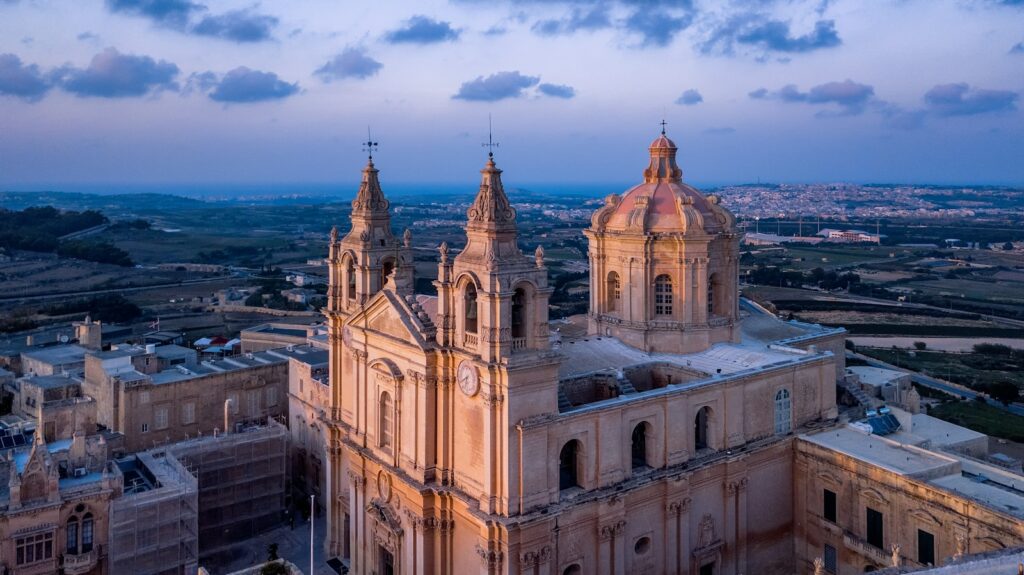
Visitors can explore the many narrow streets and alleys of Mdina, as well as visit the Mdina Cathedral and the Mdina Dungeons. For those looking for a more relaxing experience, Malta’s beaches are a must-see. The most popular beaches include Golden Bay, Mellieha Bay, and Ghajn Tuffieha Bay. These beaches offer crystal clear waters and soft, sandy shores, making them perfect for swimming and sunbathing.
If you’re interested in history and archaeology, then the Megalithic Temples of Malta is a must-visit. The temples are considered to be the oldest free-standing structures in the world. They are older than Stonehenge and the Egyptian pyramids. Ggantija and Tarxien are the most well-known temples.
In conclusion
In conclusion, Malta is a small but diverse country that offers a wide range of places of interest for visitors. From the historic city of Valletta to the natural beauty of Gozo and Comino, Malta has something for everyone. Whether you’re interested in history, culture, or outdoor activities, Malta, the “Flower of the Mediterranean “ is always a great destination to visit.
Some additional information
Public Transport
Malta Public Transport is the company set up in 2014 to operate the bus services in Malta and Gozo. Bus services on the Maltese islands generally operate daily between 5:30 and 23:00hrs
Taxi Service
Various taxi services are available in Malta, and these can pick up passengers from anywhere. If you need a taxi, it is best if you download any one of the taxi apps available. Taxis can pick up passengers from anywhere except bus-stops.
Taxi services from the Malta International Airport to all localities in Malta are based on a fixed tariff. These tariffs can be seen and accepted prior to booking on the app.
Tours
If you take a walk to the strand in Sliema there are many sea and land tours available, or ask us and we can arrange a tour for you.
